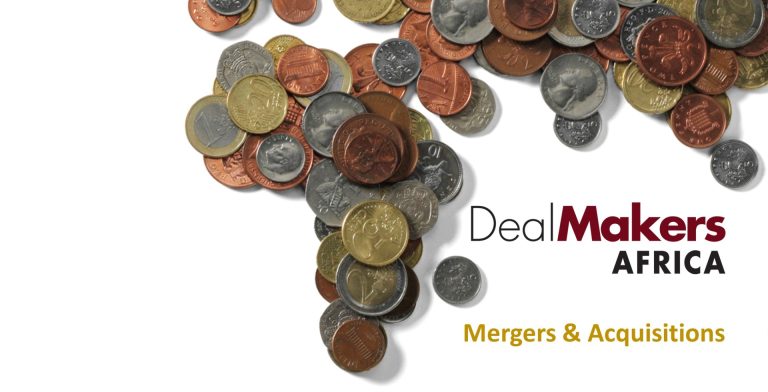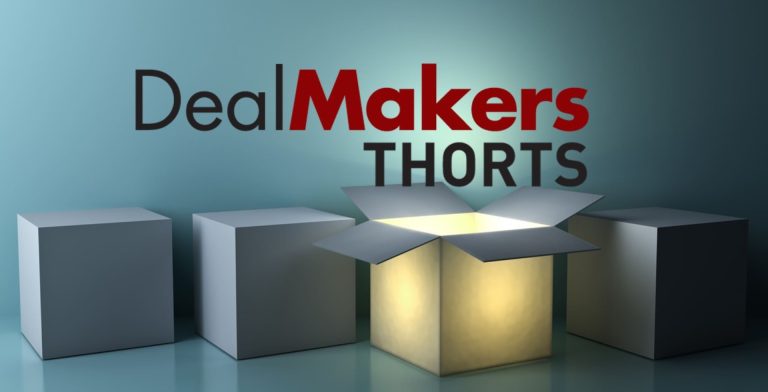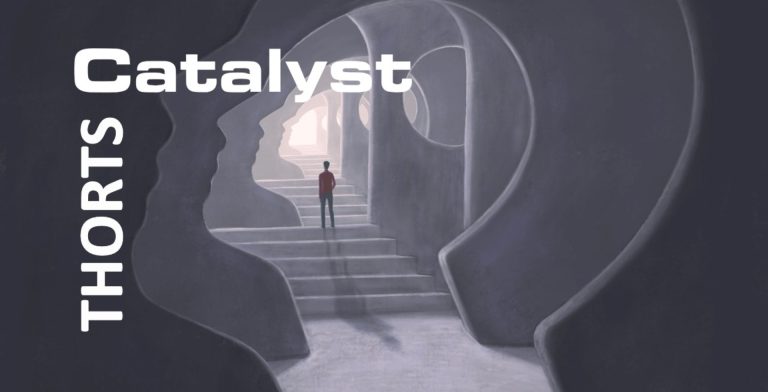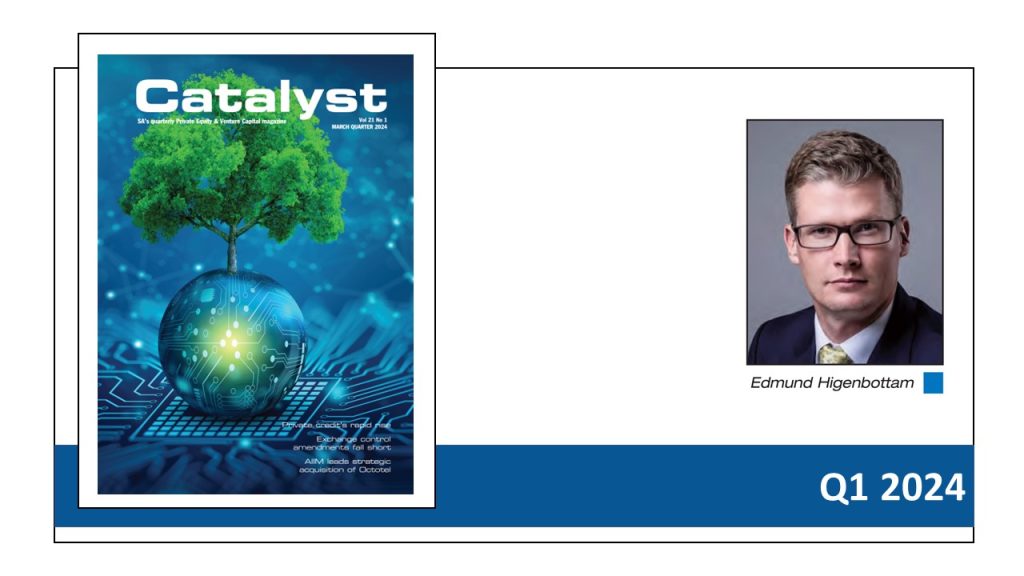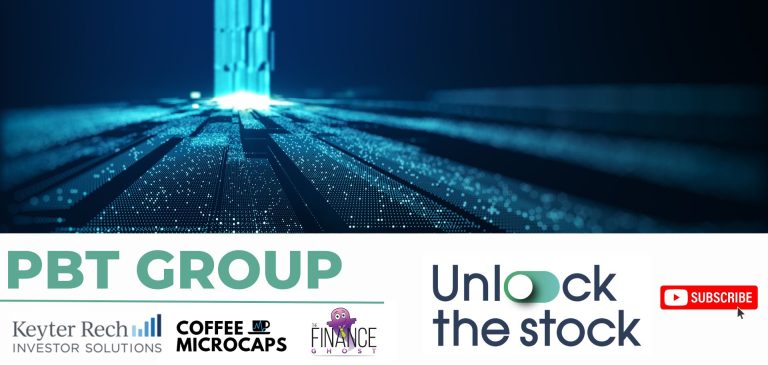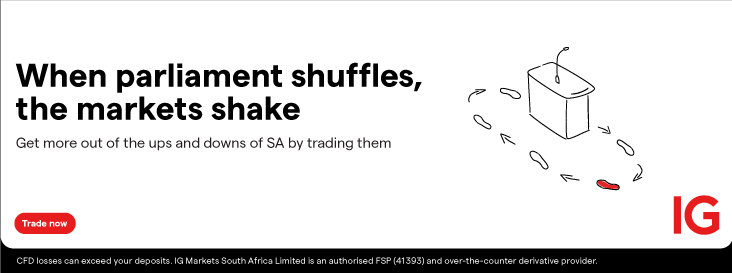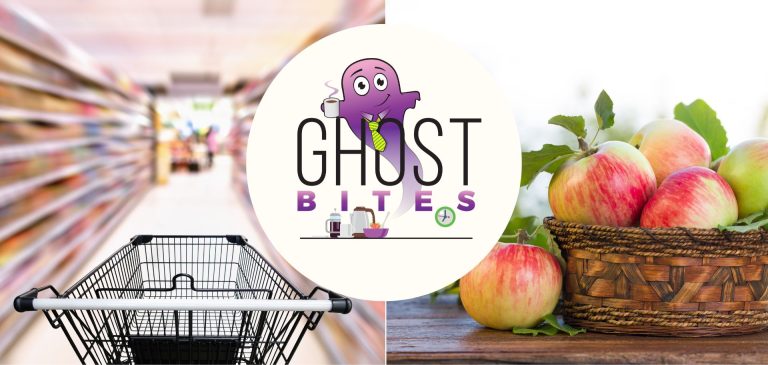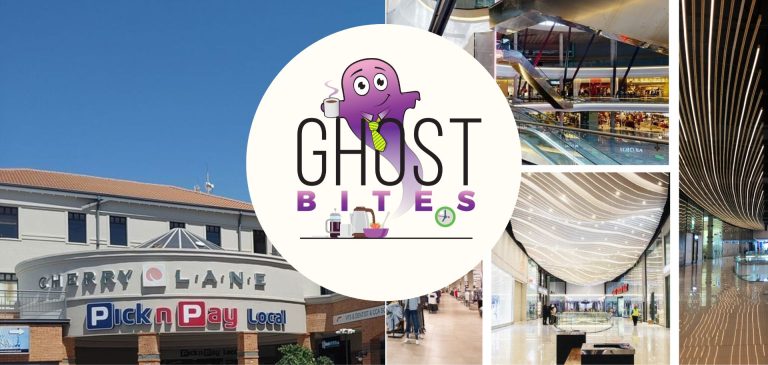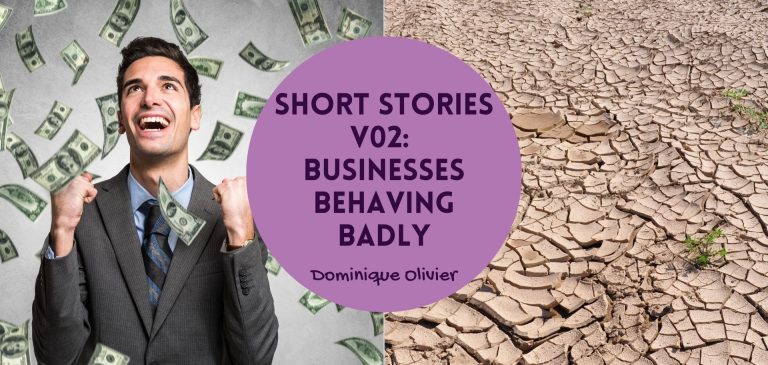The Trader’s Handbook is brought to you by IG Markets South Africa in collaboration with The Finance Ghost. This podcast series is designed to help you take your first step from investing into trading. Open a demo account at this link to start learning how the IG platform works.
Listen to the podcast using the podcast player below, or read the full transcript:
Transcript:
The Finance Ghost: Welcome to the first episode of this collaboration between me, the Finance Ghost, your host for this podcast, and IG Markets South Africa. And this is a collaboration that I really am incredibly excited about. IG Markets South Africa has been in the country since 2010, which of course, you may recall, was when we had all these exciting new stadiums all over the place and the world was watching us put on a stunning World Cup. Much has happened since then, both good and bad, in South Africa, but I must say IG has remained committed and there is a lot to be said for that.
So this is the first podcast in a series that will see us partnering to bring you proper insights and information about this thrilling world of trading. Many of you, like me, have experience investing in stocks or perhaps other asset classes like bond or gold ETFs. But many of you, like me, have perhaps never tried CFDs as a way to trade asset classes rather than just invest in them.
Trading and investing are two different skills, although they do share many fundamentals, and I am personally just excited to learn about the world of CFDs and to learn along with you here. And to make all of that possible on these podcasts, we will be joined by Shaun Murison from IG. He’s going to be our guide in this stuff. Shaun, thank you so much for what you are doing with me on this show, for the support from IG Markets South Africa. And I think let’s start with a little bit about yourself and perhaps just some more information on IG as well.
Shaun Murison: Hi Finance Ghost. Can I call you Finance Ghost? Yeah. I like whiskey, live music and financial markets. So if that’s what you’re asking.
The Finance Ghost: It’s a good start. Whiskey, live music and financial markets is a great combo, Shaun. We can go with that.
Shaun Murison: Yeah. Look, I’m a long-time trader specialising in the field of technical analysis. I’m a senior market analyst for IG. I was with the company before it was actually IG. We were the white label of IG, offering the products to South Africans, and we grew quite big quite quickly, and then IG bought the company out. So I’ve been here for about 16 years in total, starting off in a number of different capacities, but for the most part as a senior market analyst for IG, now working in our offices here in Sandton. IG is one of the oldest and largest online brokers of its sort, specialising in CFDs and spread trading. Been around since 1974.
Originally a way to trade gold, an index form. So a lot of people might not know, but IG was originally called Investors Gold. Now we are one of the largest CFD providers in the world. 20 offices around the globe form part of the IG Group. And that IG Group is listed on the London Stock Exchange. Our financials are in the public domain and we’re a FTSE 250 listed company knocking on the door of becoming a FTSE 100 company with a market capital, market size of about 3 billion pounds. And I think just to put that into perspective, if look at our local JSE as a listed entity, multiples in terms of size of the JSE, which is about 10 billion in terms of market cap.
The Finance Ghost: Thanks, Shaun. Yeah, it’s great to get some of the background. Investors Gold. I must say, that is excellent. So not called that anymore. Of course, it’s kept the IG acronym, but that is a fun little fact as a background about the business.
Shaun Murison: This is not to be confused with Instagram. We’ve been around for a little bit longer than Instagram.
The Finance Ghost: Not to be confused with Instagram at all. Although I think Instagram is where a lot of traders like to show everyone how easy this game is. But I’m sure we’ll talk about that. This is not the gold foil Lamborghini club going on here, that’s for sure. So that actually brings me quite neatly to the goal of the podcasts. And the idea here is that we are planning a number of episodes, and if you’re listening to this podcast over the time we are recording it – so that’s now starting halfway through 2024, because these podcasts will be available for a long time – then by all means, send through your questions and we’d love to incorporate them in the show as we go. So don’t be shy to reach out and say, hey, this is what I’ve always wanted to know about CFDs or trading for that matter. And I think let’s make sure we cover it because the point at the end of the day of this series is to actually help people get started in trading.
So if you are a super experienced trader, yes, you might learn something by listening to this podcast, but it’s not really aimed at your needs. I have no doubt that IG has a whole lot of other content going out all the time that is helping you make good decisions in the markets. This series is more for those who are interested in trading, but perhaps just don’t quite know how to take that first, all-important step. And Shaun, what is it that you think makes that step so difficult? Why is it a daunting process for people to actually say, yes, I’m going to now put real money into this thing, I’m going to start trading?
Shaun Murison: It’s a good question. I think maybe there’s a bit of a fear of the unknown, adversity towards risk, but caution can be good and respect is good for the markets, this ever-evolving market.
But I think once you start to understand where trading fits into an investment portfolio, that there’s lots of tools to assist you through that process, to manage risk, to help mitigate those fears, help that decision making process, I think it becomes a lot easier. Trading is not for everyone, it’s a high-risk, high-reward environment.
I think if you have an investment background, you’ve already taken a few steps along the way already. And I think a lot of people are already trading in their investment portfolios, but there are better instruments suited towards trading, to being a little bit more aggressive in the market, if your idea is to be short-term in the market.
The Finance Ghost: I’ll tell you when I get nervous is where people say to me, oh, I want to start trading, but they’ve never actually participated in the markets in any way, shape or form. I think that is an area where I always think hmm, this is dangerous stuff. Is this really where you should be starting? The markets will humble you very quickly, can humble you in a small way or it can humble you in a big way, and it’s much better to be humbled in a small way that doesn’t hurt too much. So I don’t know if you share that view, Shaun, around the risk of when you get into the markets and you’ve never even bought a share in your life. Should you be starting with a CFD or is there enough of a process around that where you can actually start with CFDs, as opposed to starting out a bit more gently with shares and then moving into the leveraged instruments?
Shaun Murison: I think you want to set up an investment portfolio and you look for yield over the long term. I think you need to understand where trading fits into that investment portfolio. It is seen as higher risk, higher reward. And so when you start looking at that, its geared at shorter term. It doesn’t just have to be about speculation.
When you look at trading, it can be a way to actually create some type of insurance against an investment portfolio or to manage an investment portfolio. When you think a market’s really too far and maybe there’s some downside risk, you can take what you call a short position, the trade with the view that you expect the market might fall a little bit and protect that portfolio. So there’s a number of different ways to skin the proverbial cat with trading, it’s not just about taking risks.
The Finance Ghost: It’s lucky I’m wearing headphones, or my cats might hear you, and then there might be some real fear back here that has nothing to do with the markets and more to do with that world-famous analogy or idiom. So I think let’s move on to talking about some of the topics that we are going to be covering in this series.
We’re planning around 13 episodes, so we’re going to be with you for a while. We’ll be releasing roughly every two weeks until the end of 2024. They’re going to be around 20 minutes probably per show, just so you can plan a bit. And obviously that will vary quite a bit depending on what we’re covering, but we’ll try keep it around that range. So one drive, one jog every two weeks, if you can give us that, then I think you’re going to learn quite a lot about trading along the way. And the most important thing really, is to take what you’re hearing on this podcast and actually put it into practice, because that is where you really learn. You actually need to see it on your screen to truly understand what people are talking about. You can listen and you can imagine, but you’ve got to see the thing.
So aside from the topics like how to open a trading account, which is obviously quite basic stuff, we’re going to deal with a lot of fundamental stuff around trading as well. So over this podcast season, we’ll talk concepts like day trading, swing trading. We’ll talk about the costs of trading CFDs. We’ll talk about why risk management is important. We’ll obviously talk about trading signals as well, that thing that people just love selling over Instagram. And obviously, we severely distance ourselves from a lot of that kind of stuff because here you are actually in a proper place with a proper licensed provider, giving you really good, solid research. And all of this is because ultimately, trading is a game of tactics and strategy. And I think that’s why I love the thought of combining some of this stuff with investing, because I think the combined toolbox really is a powerful one indeed.
I find that there are too many investors who kind of look down on trading and say, oh, short-term, well, how can you try and figure out where something’s going? Long-term is the only way. Likewise, I know a lot of traders who have made a fortune, all while investors watch their positions, do 8% a year. I don’t think one is right and one is wrong.
I think both are powerful and I think part of it is not just understanding your own personality, but also understanding how they are different, why both strategies are actually pretty valuable and how to use them, obviously.
So I think, Shaun, that leads me to the question I wanted to ask you next, which is just maybe the most fundamental question of all. What is trading and how does it differ from investing?
Shaun Murison: There’s a number of differences, but I suppose the first pertains to time horizon. So investing, your time horizon is a lot longer. You’re looking at buying at good quality companies or whatever the asset class is, holding it for a number of years, there’s a search for yield. In trading, a large part of it is speculating on short-term movements in the market and you’re looking to create a capital gain on profit. With trading, generally, there’s a lot of different tools at your disposal. Firstly, you’re trading with leverage and so essentially all that means is that your profits or losses are magnified within the market. So it allows you to take a smaller game and magnify it and hopefully take that profit out. But obviously there’s a risk of increasing that loss as well.
Another key thing to take note of in terms of that is that with normal investing, you generally are long only. So, meaning that markets have to go up for you to make money. But when you’re trading you can actually benefit – I don’t like using the word benefit – but you can capitalise on a market that you expect to fall, a market that’s falling. So you can make money in a rising or a falling market in a short-term trading environment.
The Finance Ghost: We’ll certainly get into long and short positions over the season, but I think that for me is one of the big appeals of trading and people use that in different ways, right? They hedge a position and that’s something that you kind of talked to earlier. You can take a short CFD to hedge potentially a long position if you’re worried about what might happen there and you just want some short-term protection. You can take an outright short, where you actually believe that a company is just so overvalued that the thing has got to fall over. And it happens. We’ve seen some huge downward moves, companies that are just valued too high. Nike is a fabulous recent example, trading at a massive valuation, they release an update that sales are looking a bit dicey, and suddenly they shed a very large percentage of their market cap. So the short positions are really interesting, and that’s obviously something that investors actually can’t take advantage of. They might avoid an overvalued company, but they can’t take an outright view to say, well, I think that this thing is going to drop and hence I’m willing to go short on it.
So that, for me, is one of the more interesting things about trading that really does set it aside from investing. But of course, that’s where a lot of the risks come from. And you raised another point there that talks to the risk, which is leverage. The fact that whatever move you get in the underlying instrument, the percentage move in your money that you’ve put into this thing is going to be higher than that. So there’s some risky stuff here. If you’re going to take short leveraged positions, you’re betting against the share price going up, you’re betting that it will go down, basically betting against inflation, so you better have some good reasons for that. And you’re doing it with leverage. Of course, there are ways to do it that are less risky, right. The long positions are less risky than short positions and all those sort of techniques that we’ll no doubt discuss over the course of the show. But, yeah, those are some really good differences and I guess time horizon, right, that’s the other big one.
Shaun Murison: Yeah. So just on that long and short, to say there’s a lot of long-only investment that goes into the market. So there is a bias to the upside. I think when you’re looking at shorting the market, taking the view that you expect the market might fall, you do need to be a little bit more nimble in the market, but at least you have that opportunity. There’s always an opportunity within the market by having access to those tools. And when we talk about risk, it is elevated because you’re using leverage. However, nowadays we have automated tools that can assist you with that, like a stop loss tool. So if you place a trade in the market, whether you long or short, you can say, well, you can predetermine the risk that you are prepared to take and say, well, if the market falls this much, get me out of the trade.
We’re not always going to get right in the market. Sometimes we’re going to be wrong, and that’s just the reality of it. But you can manage that downside risk, and I think that’s one of the successes that you will learn when you go through the journey of starting to trade. How you manage your downside risk in markets will determine whether you can do this or not.
The Finance Ghost: Yeah, a lot of it comes down to stuff like win rates. I’ve heard people talk about concepts like that and keeping a journal of trades that worked and didn’t work. It’s really interesting to speak to traders and hear them talk about this kind of stuff. And it’s a very different way of thinking to, long-only investors and long there means the direction of travel, not just the time horizon, but the time horizon is another major difference. In most cases, these trades are relatively short-term in nature. Not always, but generally speaking, they are shorter term in nature.
This is not like buy and hold forever quote Warren Buffett kind of stuff. And traders are actually assessing whether or not they’re doing well, not necessarily based on percentages on how much money they put in, I guess, but rather just how much money are they actually making and what is their win rate and that kind of thing. Whereas an investor will look at the benchmark and say, well, the index did 10%, I did 12%, and hence I’ve done really well. So those are sort of some of the other differences, right, is the way you actually measure success as a trader versus an investor.
Shaun Murison: Yeah, we call it positive expectancy and really it’s a function of how frequently you’re right – your win rate – relative to how much money you make when you’re right, to how much money you lose when you’re wrong.
That creates a function. Different types of strategies create different types of positive expectancies. So something like a trend-following system in the market, you might not be right very frequently in the market. However, when you’re right, you make a lot more money than you lose when you’re wrong. Now, if you’re a day trader or a scalper or someone who likes to be active in the market, trade intraday, during the course of the day, not hold positions overnight, you might be reliant on being right all the time, having a high win rate. The frequency with which you are right relative to wrong is higher. However, quite often you might lose more money when you’re wrong than you make when you’re right. But you balance those two functions together to see whether overall you expect to be profitable or if you are profitable within the market or not.
The Finance Ghost: There’s a lot of maths, right? There’s a lot of science. I mean, I’m trying quite hard to get better at golf, which is not an easy thing to do. But a lot of that comes down to stats. There are a bunch of excellent YouTube channels showing all the stats around the game and how much it’s changed over time. And I just find it super fascinating. You can see, okay, this is how I need to get better, because statistically, if I’m this much closer to the hole on my first putt, I’ve got a much better chance than if I’m further away. And it sounds obvious, but some things just are way more technical than others. And I think something like golf is a very well-understood, data-driven, technical sport.
My other great love, Formula One, is honestly much the same. I clearly have an affinity for these kind of things that are just very technical. I think trading is much the same. A lot of it is probability-driven, looking for patterns, looking for understanding around what’s gone wrong previously. And you’re not going to get everything right. It’s absolutely impossible. So it’s about making sure that you win more often than not, and you do it with the right sizes and you learn how to not lose in a big way and to not let your emotions get in the way. I mean, that’s the other thing, right? That’s why again, I think I just enjoy the whole concept of the markets so much and the sports that I enjoy. There’s so much psychology around it and that’s a big part of the journey, right?
Shaun Murison: Yeah. Well, I think that you’ve touched on something very important there. Having emotion can affect your discipline in trading. So quite often it’s easy to know what to do, but not easy to do what you should be doing, if that makes any sense. We know we have a set of rules when we go into the market, when there’s money at play, there’s an emotion that is attached to that. And so sometimes that affects your decision-making process. So a way around that is to maybe look at automating those processes.
We talked about stop losses. And the beauty about technology now and the access to some of the tools that we have is that if you know that you don’t want to be wrong or you struggle to take a loss – and like we said, you’re not going to get it right every time – then you can automate that price, that part of your trading you can put into the system. All your decisions – this is where I want to buy, this is when I want to take profit, and this is where I’m prepared to take a loss if it goes against me. And then you don’t have to think about things and you can start looking at ways to remove that emotion and increase the discipline, because that will be a contributing factor to success of trading.
The Finance Ghost: Absolutely. So another common question that comes up that I do want to deal with before we bring this first episode to a close is the age-old one of how much money does someone actually need in order to start trading?
Shaun Murison: Different brokers will have different requirements in terms of what you need to start trading. I think that’s the first point. So IG has no minimum requirements to start trading, but you do recommend starting with a sufficient amount. I think probably about R20,000 if you’re opening a local account, might be something, a starting point. It does make it a little bit easier if you start with a little bit more. And that’s because you do need to cover your costs through trading. Your transactional costs, things like that. And it also limits your opportunity cost if you start with too little, you might not be able to take a certain trade because you’re stuck in another trade which you haven’t exited yet. So those are considerations.
But I think more importantly, it should be really a function of what is your total investment portfolio and how much of that are you prepared to allocate to a high-risk, high-reward environment? And recommendations are between maybe 10% and 15% of that investment portfolio in this environment.
The Finance Ghost: I love the fact that it’s not an either-or with investing. I think that’s a great concept that we just need to bank. We’re not saying that trading is better than investing or investing is better than trading. We’re saying that one is golf and one is Formula One. They’re different. They’re both sports, they’re both markets, but they are a different way of doing them. So as we work towards bringing this episode to a close, I hope you are as excited as I am for what’s to come in this series.
And I just want to highlight the IG Academy before we go. So they’ve got online courses, webinars seminars. I was having a look at it earlier. I think it’s quite well thought out. It’s got courses split into basic and more advanced topics. There are little online quizzes, which helps you realise whether or not you actually understood what you were reading and certainly keeps you focused if you have ADD like me. And a number of the courses also have short videos, which I think is pretty cool. So just an absolute wealth of knowledge there. And it kind of talks to this point, which is that the markets really are just the world’s best intellectual puzzle.
I mean, I’ve talked already to the point, and you feel the same about them. There’s technical knowledge in there, financial knowledge, there’s human psychology. They are ever-changing. They are fascinating. And the route to success is to be committed to learning as much as humanly possible. I think it really is the hobby that pays. It requires practice and a commitment to continuous learning, but it can be incredibly lucrative. And Shaun, I guess that’s where the IG Academy comes in. It’s just providing that level of insight.
Shaun Murison: Yeah, I think you said it quite nicely. The market is a huge jigsaw puzzle, but in the short term, it’s a boating game. And essentially that’s what we’re doing. Trading is a short-term way of approaching the market. So we’re trying to gauge sentiment. The market is pricing in that the sum of all market participants, whether it’s an institutional investor, rational investor, retail investor, irrational investor. And so things like the IG Academy and the newsletters we offer do help demystify this process, help you understand that these types of behaviours create different trends in the market. Really being able to identify those trends and see where you can join those trends can make your life simpler.
So, yeah, lots of resources there to help traders through the journey or new traders through their journey. And they are all free resources, whether it’s the IG Academy, which you can download to your phone, or you can access from the web. Also newsletters which just help paint narratives around the market, or webinars that we do host. All available at ig.com.
They are there to help you through that training process. And like I said, it’s really just the cost of that is really your time, not financial.
The Finance Ghost: Yeah. And spend that time upfront before you are putting real money in the game. Because if you do it the other way around, you will realise what the cost of your money looks like as opposed to the cost of your time.
So I think that brings us to a close on our first episode in the series, and I would certainly encourage listeners, go check out the IG South Africa website, it’s ig.com/za. And open a demo account to start playing around with virtual funds. Go and browse the content on the Academy and just get ready to learn about trading. It is a world where your success really is quite perfectly measurable, actually. And there’s not much like that.
So the commitment you make to learning about these markets could literally change your life. It could well be the best decision you ever made, is to make this part of what you enjoy and to become more active in your portfolio. And thank you for letting us be part of that journey here at IG and me as The Finance Ghost. Shaun, thank you so much. It’s been a really great first show, and I’m so looking forward to doing the rest of the series with you.
Shaun Murison: Awesome. It’s been a pleasure.

